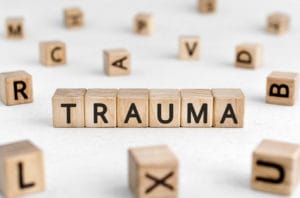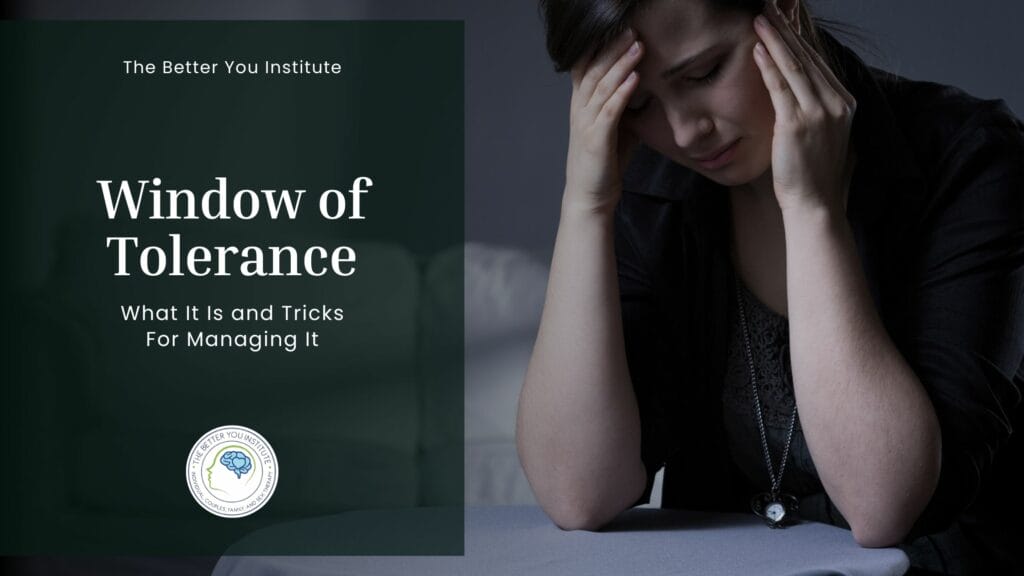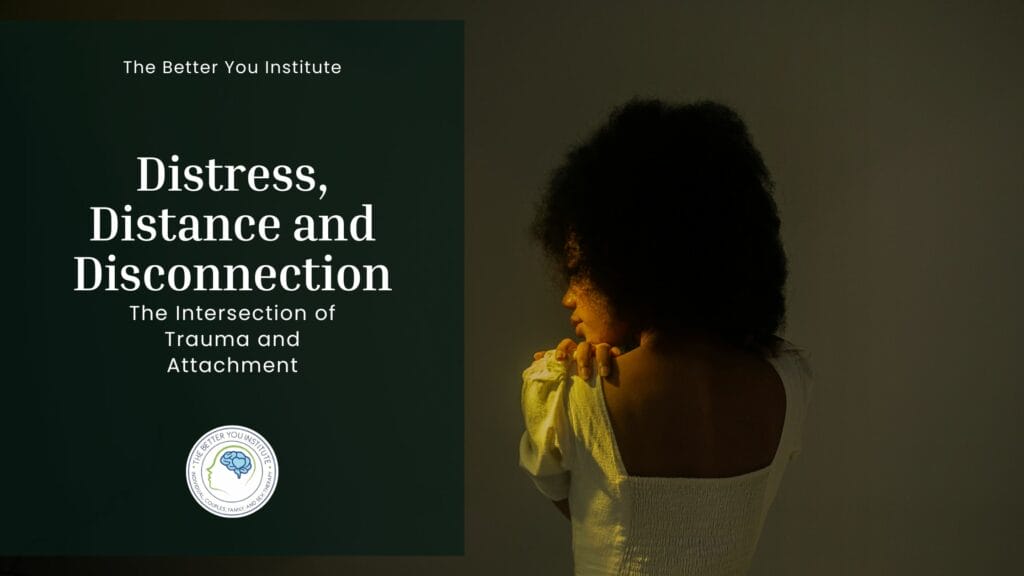If you have been thinking about getting trauma-focused therapy for you or your child, it will be helpful to learn what to expect from trauma-focused cognitive behavioral therapy (TF-CBT). Trauma happens when an experience disrupts a person’s sense of safety and their ability to cope. Trauma-focused cognitive behavioral therapy is used to treat childhood trauma by helping people between 3 and 21-years-old who are experiencing significant difficulties related to their trauma. If you want more information about what trauma is or where this model came from, you can read more here.
What is trauma focused therapy? Trauma-focused cognitive behavioral therapy uses the most effective method of individual sessions with the child, individual collateral sessions with at least one caregiver, and conjoint family sessions combined. Caregivers can help children learn how to self-regulate the physical symptoms and triggers tied to post-traumatic stress and reinforce the skills learned in weekly sessions. When a caregiver is not involved, a child can still learn the necessary skills to master their post-traumatic stress symptoms and trauma memories with the therapist; however, families experience the best results when caregivers and families are involved.
TF-CBT is a short-term treatment that generally lasts anywhere between 12-24 sessions, depending on the nature of the trauma and who is involved in the treatment. Sessions are weekly and range from 1-1.5 one hour to one and one-half hour sessions. This approach is the opposite of a rip the Band-Aid off approach. Therapists use different techniques depending on the child’s age. Typically, younger children will use play and art to express themselves. Where older adolescents and young adults will use their words to share what they have experienced, clients will be psycho-educated about general trauma and then start to make connections between their personal experiences.
Table of Contents
Breakdown of trauma-focused therapy sessions.
 Trauma Focused Cognitive Behavioral Therapy (TF-CBT) is a conjoint child and caregiver approach to therapy where the child and at least one caregiver should participate in the treatment. There are also times when the client and therapist will decide to add additional family members in conjoint family sessions. While caregiver involvement is recommended but not required, it is the single most important predictor of effective TF-CBT treatment outcomes. Below you will find the three types of sessions used in TF-CBT:
Trauma Focused Cognitive Behavioral Therapy (TF-CBT) is a conjoint child and caregiver approach to therapy where the child and at least one caregiver should participate in the treatment. There are also times when the client and therapist will decide to add additional family members in conjoint family sessions. While caregiver involvement is recommended but not required, it is the single most important predictor of effective TF-CBT treatment outcomes. Below you will find the three types of sessions used in TF-CBT:
- Individual sessions are first used to help the main client learn about trauma, and then they begin to identify how their trauma specifically impacts them. First, they identify their traumatic experiences and post-traumatic stress symptoms. Unique to the TF-CBT model, clients don’t jump right in to talk about specific details of their traumatic experiences. Instead, clients will name how trauma affects their body, emotions, thinking, and actions. For example, after a serious car accident, a child may draw a picture of them with scribbling on their belly to show what happens when they get ready for school. This picture may be them sharing about nausea they experience whenever it’s time to get to the car for a ride to school. Individuals also start learning specific techniques for managing the symptoms that affect their body, emotions, thoughts, and behaviors. They practice the skills between sessions and come back to see what worked and what didn’t.
As the young person feels more in control of their post-traumatic stress symptoms, they may be ready to begin recalling detailed memories about the experience. Slowly, as they talk more about their trauma week-to-week, they will begin to feel less threatened by talking about it. Getting their story out in an organized format helps a person gain mastery over the memory and restore memories in the brain where the memory isn’t as fear-based anymore. Some young people use art, poetry, music, and other ways to get their story out. This story is called a trauma narrative.
- Collateral caregiver sessions include someone else in individual therapy sessions with the therapist to help the main person in therapy. Usually, this is a parent or guardian with whom the young person eventually shares their story. It is important that the caregiver who is involved is not the suspected perpetrator of the abuse. The person involved needs to be a safe adult and not someone who the child associates as a past or current threat. This person will also be learning all about trauma and the ways it has impacted the main child. They will also learn the same skills and be encouraged to practice those skills and remind them to use them when they experience a trauma trigger. For example, they might help the child who is worried about getting into the car to practice deep breathing and even do the breathing with them to help reduce their anxiety while riding in the car.
In addition to learning specific techniques to help their child manage the symptoms that affect their body, emotions, thoughts, and behaviors, the caregiver will also learn additional parenting techniques using behavioral management. They will explore the motivation behind their children’s behavior, learn which behaviors to ignore, which behaviors to reward, and when to give consequences. They will practice the parenting skills between sessions and come back to see what worked and what didn’t.
During these sessions, the therapist helps the caregiver process the secondary trauma and stress that they may be experiencing. The same skills that work for the child may work for the caregiver. And the separate environments allow both the main client and the caregiver to process their experiences without worrying about overwhelming or undermining the other person.
- Conjoint family sessions will include the main client and other family members in a family session with the therapist. These sessions increase family communication and cohesion and draw on family strengths to support one another. These sessions are also for exploring and resolving relationship conflict. Families sessions also address barriers to treatment as they come up. For example, the therapist may be having a hard time getting the child to remember how they act when getting ready for school. Insight from other family members might reveal that the child’s breathing shallows, clench their stomachs, and lock themselves in the bathroom every morning before school.
Later, the person who attended the collateral sessions may sit in on a session where the child shares their trauma story. Sharing the story with someone who “gets it” further supports a person’s healing. This person has learned similar tools that the child has during treatment and is now empowered to bear witness to the child’s story and provide the appropriate support. If that person has not gone through the treatment, they may unintentionally minimize, blame, or make unhelpful assumptions about the main client’s trauma. Therapists recommend that the child share their story. To do so, the therapist will help prepare the child to share their story with their caregiver. With that said, not every child decides to share. Ultimately it is the child’s choice. They may decide to share after therapy has ended on their timeline.
What is the main client/child’s role in TF-CBT?
 To think about a parent or adult who I think might help me to heal from my trauma.
To think about a parent or adult who I think might help me to heal from my trauma.
o If I honestly can’t identify one, I can continue with the therapy
- To understand trauma and how it has impacted me by being open and honest in sessions
o By learning the patterns and why I start to act, think, and feel a certain way after specific things remind me what happened.
- To begin practicing relaxation skills to manage my body symptoms and talk about what works for me and what doesn’t.
o By learning how belly breathing can help me whenever my heart races, my breathing quickens, or other reminders of my trauma.
- To begin practicing affect identification skills by talking about the emotions that I experience.
o By learning new emotions words to name what I’m feeling on the inside
o By connecting feelings in my body with certain emotions, like why my stomach always feels like butterflies when I get worried or nervous
o By learning to regulate the intensity of my emotions rather than feeling like my intense emotions are controlling me
- To begin practicing cognitive coping, learning how my thoughts lead to certain emotions and actions
o By starting to keep a record of the thoughts I have right before certain experiences
o By using sessions to practice testing my thinking and measure whether my thoughts are factual and helpful
- To learn effective communication skills in family sessions
o By learning and practicing reflective listening or assertive communication with the people in my family
- To master my trauma memories after I am feeling physically and emotionally safe to talk about them
o By choosing to remember what happened and tell my story
o By using all the skills, I have learned to apply them to my trauma narrative and identify the strengths I have gained through my life experiences
- To experience support from someone who I feel safe with and who I can trust
o To potentially share my story with a caregiver or another adult in my family who has gone to the treatment with me. Or to share my story with the therapist who I have been working through my treatment.
What is the caregiver’s role in TF-CBT?
 To understand trauma and its impact on the child/primary client and the family
To understand trauma and its impact on the child/primary client and the family- To discuss my feelings and thoughts about my child’s traumatic experience in collateral sessions
- To learn techniques to improve parenting skills through behavioral management such as:
o Specific praise
o Reward systems
o Selective attention and appropriate use of time outs
- To process how my trauma history may be impacting my child in separate sessions
- To learn effective communication skills in family sessions such as
o Reflective listening
o Assertive communication
o Clarifying roles and expectations
- To begin practicing relaxation skills to manage my self-care and to support my child’s coping skills
o Belly breathing
o Progressive muscle relaxation and body scans
o Guided imagery
- To receive coaching and support on how to balance, empathy, compassion, structure, stability, and consequences for my child who experienced trauma.
- To potentially listen to my child share their life story, from their perspective, in a conjoint session.
Choosing to start therapy is a huge decision but learning which therapy approach to use can pose an even bigger decision. Now that you have read about what to expect from trauma-focused cognitive behavioral therapy, you may be closer to choosing if this is the approach that is right for you or your child. As one of the most effective ways to treat childhood trauma, knowing what to expect from TF-CBT can leave you motivated to seek treatment. If this sounds like an approach that you are interested in starting or have more questions about TF-CBT, you can call The Better You Institute and make an appointment at 267-495-4951. We also offer online therapy and counseling for those who live outside the Philadelphia area or do not wish to participate in one-on-one therapy sessions.


 To think about a parent or adult who I think might help me to heal from my trauma.
To think about a parent or adult who I think might help me to heal from my trauma. To understand trauma and its impact on the child/primary client and the family
To understand trauma and its impact on the child/primary client and the family




